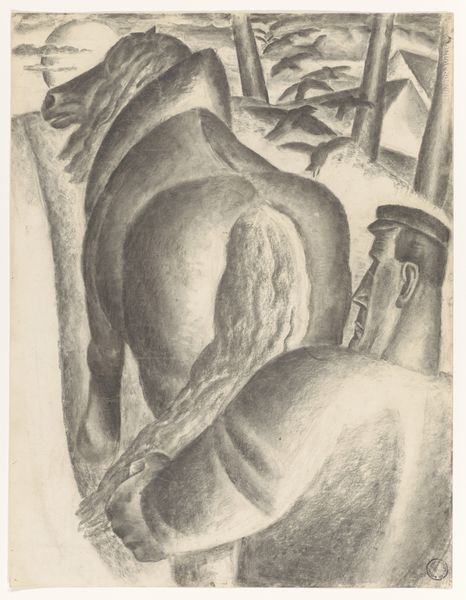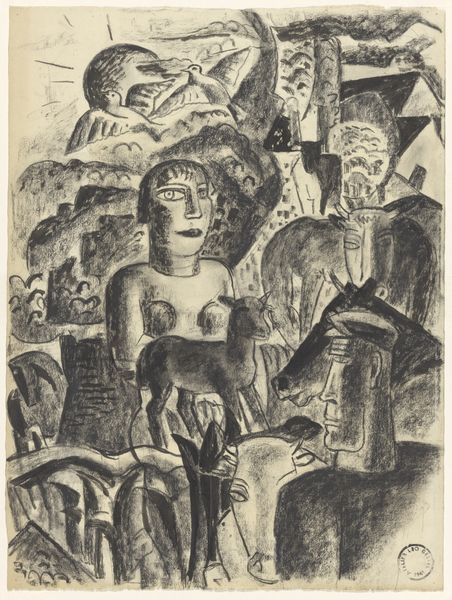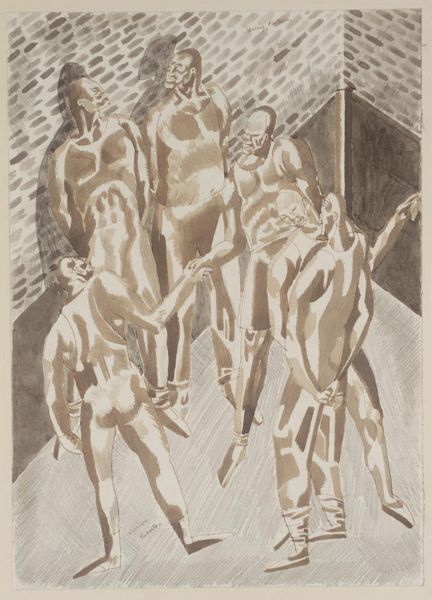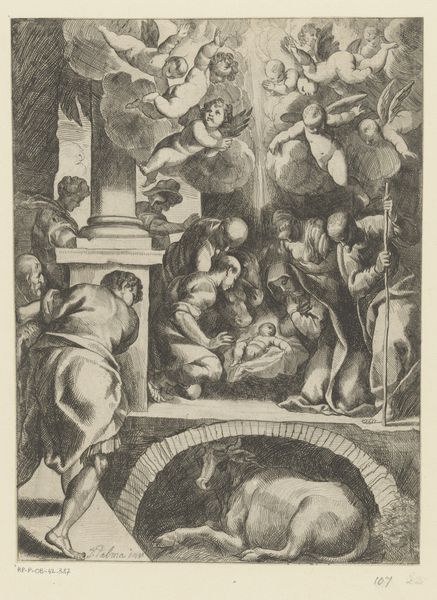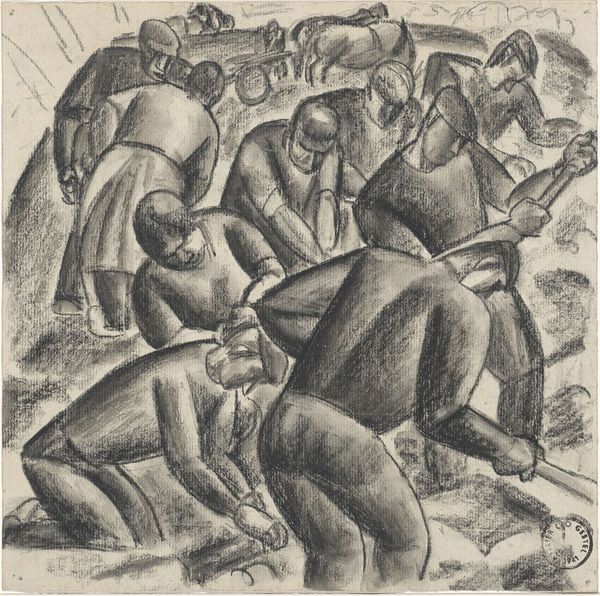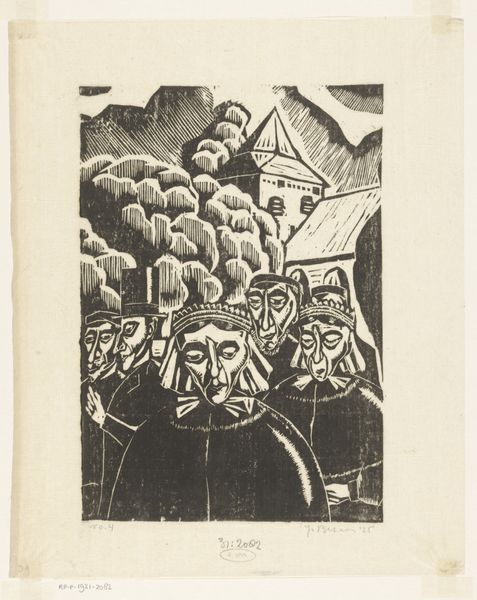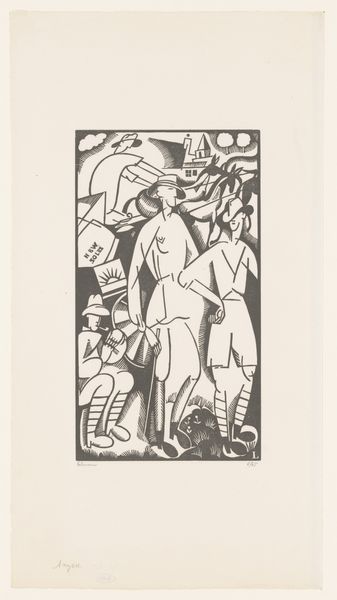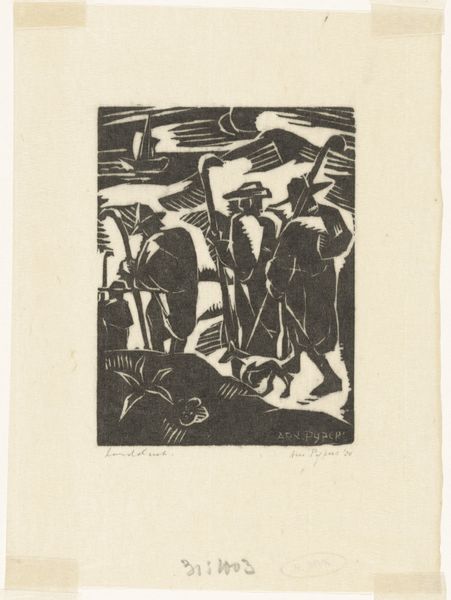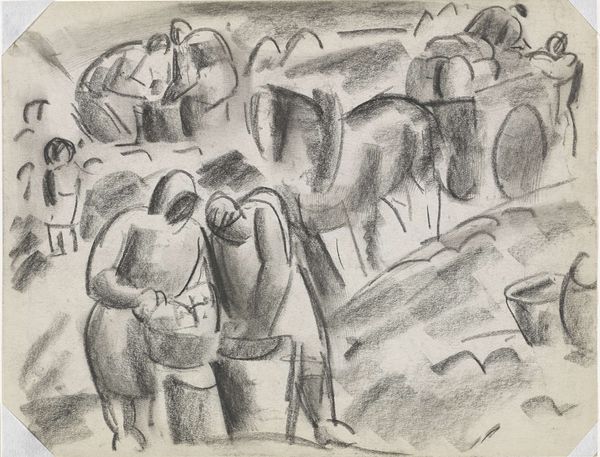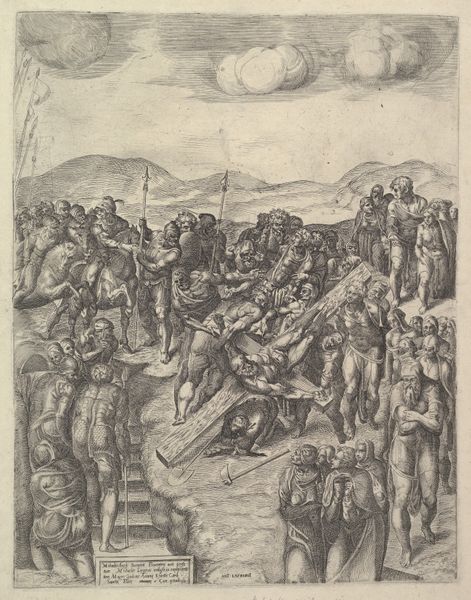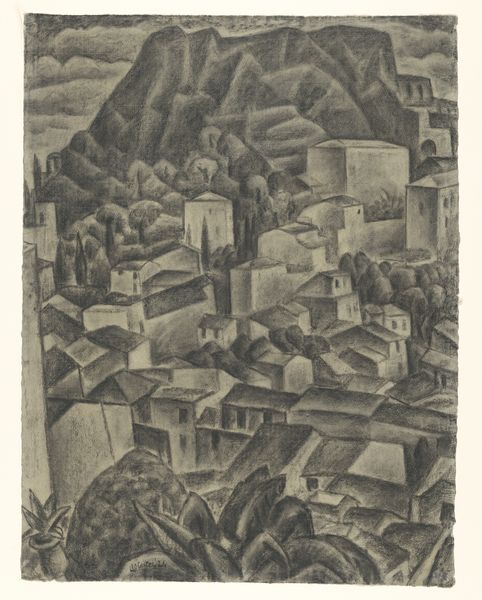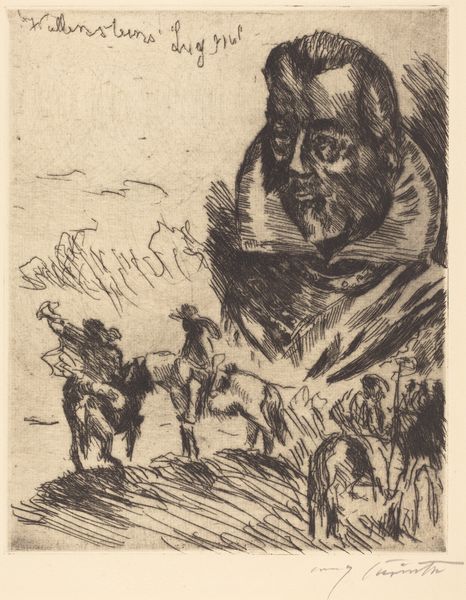
drawing, pencil
#
drawing
#
pencil sketch
#
landscape
#
figuration
#
pencil drawing
#
pencil
#
genre-painting
#
modernism
Dimensions: height 700 mm, width 500 mm
Copyright: Rijks Museum: Open Domain
Curator: This pencil drawing, "Grazende koeien, boeren en arbeiders op het land," which translates to "Grazing Cows, Farmers and Laborers in the Field," was created in 1927 by Leo Gestel and resides here at the Rijksmuseum. It's an intriguing glimpse into rural life from nearly a century ago. Editor: It immediately strikes me as a depiction of social structure, almost theatrical in its arrangement. The looming figures in the foreground feel like they are presenting the workers and the land behind them. Curator: Gestel was certainly engaging with the socio-political realities of the time. In the early 20th century, rapid industrialization impacted traditional agrarian societies, a tension Gestel explores by juxtaposing stylized, almost monumental figures with working class figures further back. Consider how the angular depiction and placement of the laborers suggests alienation even while being active in the scene. Editor: The cows, too, their posture... they seem burdened. Livestock in art is frequently deployed as symbolic representations of wealth and labor. Here the muted tones, their heads bowed in almost desperate grazing – it suggests a fragility and hardship attached to these people and animals bound to the land. Do you see symbolic meaning invested in the clothing of the figures closest to us, as well? Curator: Absolutely. The distinctive headwear worn by the front-most figures connects them specifically to rural communities and a regional Dutch identity at a time of changing agricultural policies. It's not just about documenting a scene; it's a deliberate articulation of cultural markers that define this rural identity in opposition to dominant urban cultures. Gestel wants to assert a narrative for this time, which we understand through identity, labor, and, if we dig a little deeper, the politics embedded in the relationship. Editor: It's almost like the artist is posing a question to us today. Do we recognize what is taking place in a specific culture? Are these struggles truly past us, or simply transformed? Thanks to the symbolic richness found here, we are still challenged to reframe these social stratifications with the work we see around us, or risk forgetting important truths. Curator: Gestel's drawing becomes a touchstone for examining issues of social justice and collective memory. It invites us to consider what progress actually looks like when considered in conjunction with its effects. Editor: And with its careful arrangement of symbolic elements, Gestel evokes our responsibility as an audience in perpetuating such conditions through indifference. It leaves an echo in one's mind.
Comments
No comments
Be the first to comment and join the conversation on the ultimate creative platform.
